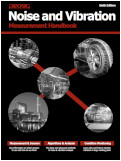What Is Amplitude Quantization Error?
Amplitude Quantization Error - Summary This article explains what amplitude quantization error is and what can be done to avoid it. Typically quantization error is caused during acquisition of data.…
Amplitude Quantization Error - Summary This article explains what amplitude quantization error is and what can be done to avoid it. Typically quantization error is caused during acquisition of data.…
There are many ways to calculate speech articulation index and each has its advantages in different applications. Prosig's DATS includes four methods for evaluating the Articulation Index as seen in the table…
As its name suggests Operational Deflection Shape analysis shows the vibration pattern experienced during normal operational condition. This is different to other structural vibration tests such as impact hammer tests, bump tests or shaker tests which require a more controlled excitation force and are used to determine specific characteristics of the structure under test, such as natural or resonant frequencies.
Whole Body Vibration (WBV) analysis for continuous vibration uses assessment criteria defined in the ISO2631 standard and the EEC vibration directive 2002/44/EC. These assessments are based on the processing of…
The RMS of a time history is a measure of the signal's overall energy and is often used when extracting features from a signal for prognosis and trending of vibration…
The intention of this article is not to present any new scientific theories or ground breaking techniques, but to introduce new users to hammer impact testing and remind seasoned technicians of a method…
Operating Deflection Shape (ODS) analysis is a method used for visualisation of the vibration patterns of a machine or structure caused by unknown operating forces. This is different from the study of the…
Various human body vibration measurements and assessments are defined in the ISO2631, ISO5349, ISO6954 standards and also in the EEC vibration directive 2002/44/EC. These assessments are based on the analysis…
In our previous post on this subject we briefly looked at how we can use the detailed design information of bearings and gearboxes to look for specific fault conditions by collecting vibration information and analysing their frequency spectra. Amplitude modulation of the vibration signatures is common and we have seen how this causes side-bands to be present in the frequency domain.
After finding the natural frequency of a system, what could be done to stop or reduce the systems resonance being excited? Basically put, how do we avoid resonance This is…
In this post we will first look at how to process data from rotating machinery. Then we will focus on shaft or gear train twist. Let's look at 3 different…
Have you reached the limits of your Sound Level Meter? Do you need to progress to the next level? Prosig have a range of systems that can increase your noise…
Prosig and their partners, SV Japan, will be holding a two-day training seminar for current and new customers in Hiroshima on Tuesday 3rd and Wednesday 4th December 2013. Subjects covered…
A method to identify subjectively objectionable disturbances (e.g. piston slap, valve tick,… etc) in internal combustion engines
Picture the scenario; you have captured some noise & vibration data from a rotating machine. Typically, this might be noise in a vehicle cabin, but could have been anything from…
When performing frequency analysis of vibration data for any application the resultant spectrum has both amplitude and phase components, therefore the phase component represents half of the information available and…
In the previous two articles (What Is Resonance? (Part 1) & What Is Resonance (Part 2)) in this series we have looked at how we can identify a resonant frequency.…
Understanding filters is actually simpler than it may first seem. Creating a filter is another story; it’s like being able to drive a car without having to know the intricate…
Assuming one wants a frequency spectrum from an acquired time measurement, it is generally accepted that averaging of a signal in the time domain is not very useful due to…
Whether you call them spikes, glitches, anomalies or data dropouts, these phenomena have been a problem to engineers ever since they started recording data. There are any number of reasons…
Here are two videos on a relatively simple, but sometimes misunderstood procedure – how to calibrate microphones & accelerometers (more…)
http://www.youtube.com/watch?v=vZCKb4ikX1s This is the final part of our four part tutorial. This adds a report to the worksheet we developed in part 3.
http://www.youtube.com/watch?v=gvwwfCampas Today we have the third of our four part tutorial. Here we show how to quickly build a worksheet to analyze the data we captured in parts one and…
http://www.youtube.com/watch?v=4ejGBG5ImfY Part two of the four tutorials showing a simple setup to capture, analyze and produce a report using Prosig’s DATS software and P8000 hardware. This part deals with setting…
http://www.youtube.com/watch?v=dGRzTxzUWfE The first part of a series of four tutorials showing a simple setup to capture, analyze and produce a report using Prosig's DATS software and P8000 hardware. Part 2…
